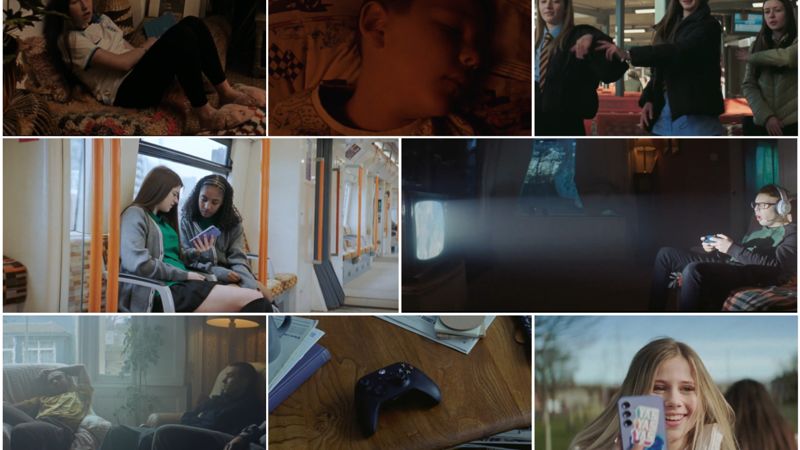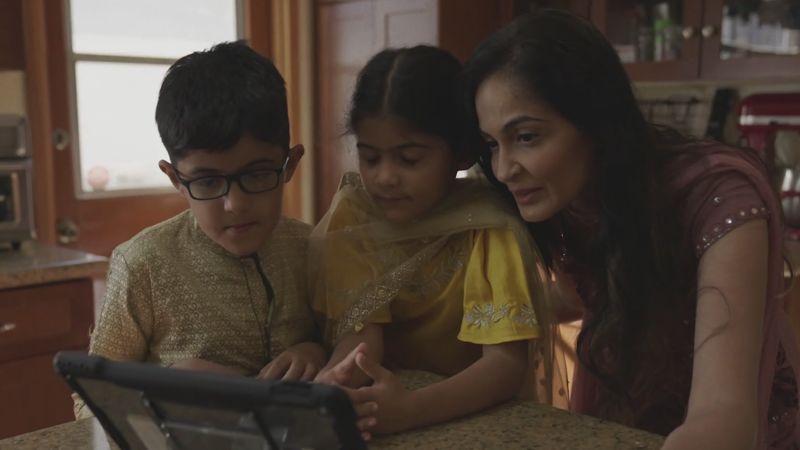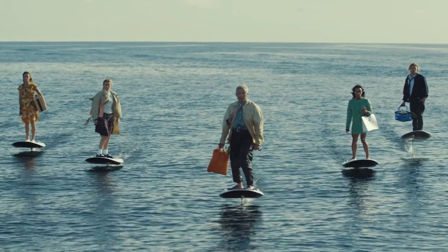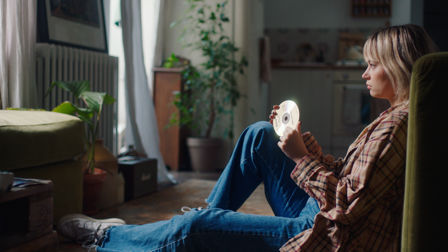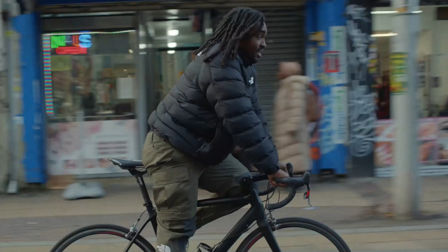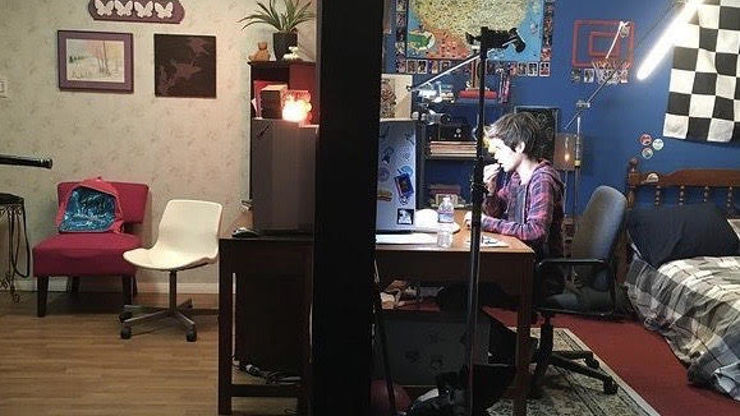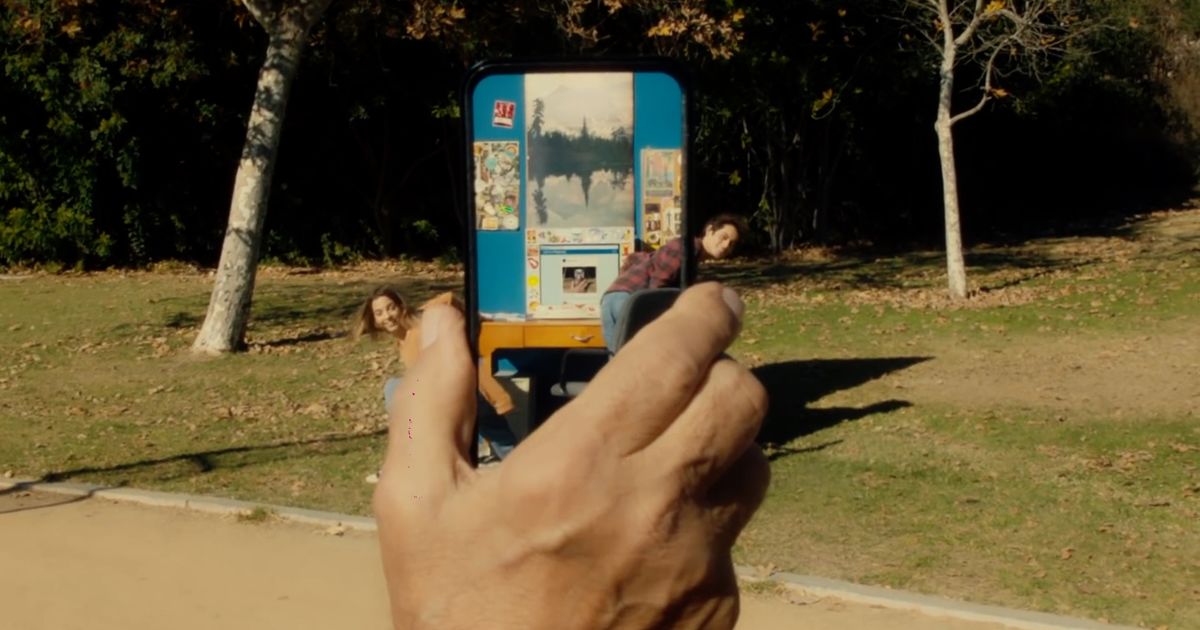How Weezer ditched the doomscroll
We asked Pulse Films director Colin Read how his in-camera trickery and a sprinkling of nostalgia helped the rockers celebrate All My Favourite Songs.
Filled with lo-fi charm and with a lovely commentary on online interactivity, the vid for Weezer's latest offering, All My Favourite Songs, is a smile-inducer from its opening moments.
Tackling a band well-known for their power-move promos, Pulse Films director Colin Read uses increasingly clever in-camera effects to take us, and our protagonists, on a retro-tinged yet clearly modern adventure from screen to green to studio scene.
We loved the energy and playfulness of the piece, so grabbed a few moments with Read to find out how lockdown shooting led to out-of-the-box thinking.
Credits
powered by
-
- Production Company Pulse Films/London
- Director Colin Read
-
-
Unlock full credits and more with a Source + shots membership.
Credits
powered by
- Production Company Pulse Films/London
- Director Colin Read
- Production Co. Obra House
- DP Trevor Wineman
- Post Company Irving Harvey
- Post Producer Kerry Mack
- Colorist Samuel Gursky
- Executive Producer Rik Green
- Production Designer Matt Sokoler
- Editor Colin Read
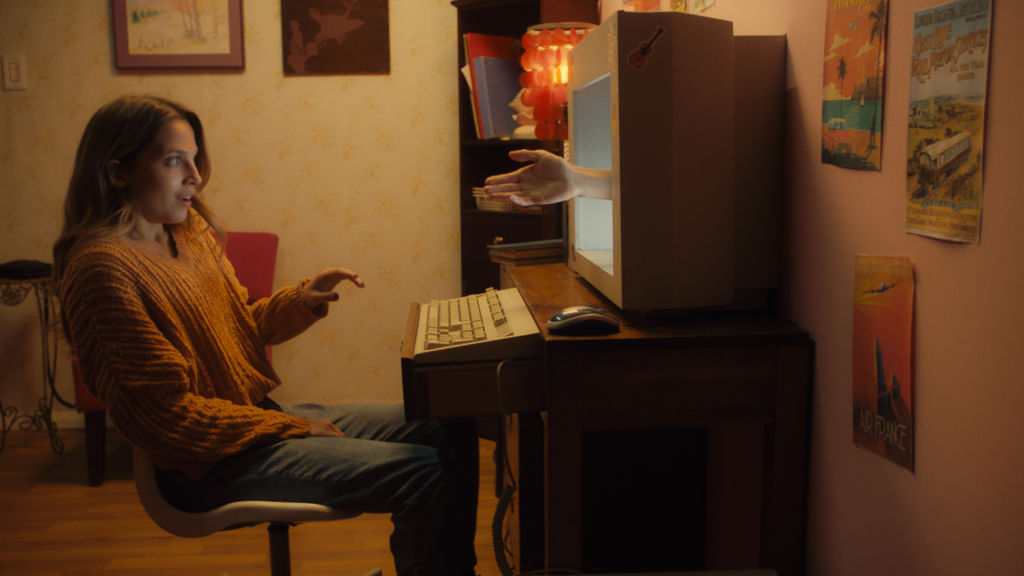
Credits
powered by
- Production Company Pulse Films/London
- Director Colin Read
- Production Co. Obra House
- DP Trevor Wineman
- Post Company Irving Harvey
- Post Producer Kerry Mack
- Colorist Samuel Gursky
- Executive Producer Rik Green
- Production Designer Matt Sokoler
- Editor Colin Read
Was the concept something that came from the band or did you bring it to them? How was it developed?
The band sent over a few thoughts on the main ideas they wanted to get across with the album. A big one was that technology (especially social media) has us all technically more “connected” than ever—with the result that people are relying on digital connections over personal, human ones. And I thought that this was certainly true; I think we’re all feeling more isolated than ever. And this is even without factoring in Covid.
So I decided to take that basic idea and run with it, fleshing it out into a concrete story. The loneliness of watching life unfold through a computer screen. And an attempt to break away from that, leaving your comfort zone, finding the courage to really connect.
I wanted to make a video that felt like the Weezer videos of my teens—fun and self-aware.
I wanted to make a video that felt like the Weezer videos of my teens—fun and self-aware. A teen angst adventure-comedy. So I sort of placed the video within my own memories: sitting up at the family computer late at night in the late 90s on AIM, discovering the internet as it evolved.
To make the story feel a little more lost in time, I wanted to make the world a bit anachronistic; the technology and blocky CRT computer monitors from that era, combined with a more modern social media site…combined with smartphones, of course!
How early was the decision made to achieve most of the effects practically? What led you down that route?
It was the very first decision I made, while first imagining the script; it was the whole reason for me to make the video in the first place. It was just the most fun way to do it! But further, it followed the idea that technology can be used to lead to human connections in the real world, and not just relationships that start and end on a screen.
It all had to feel and be real to hit the right notes.
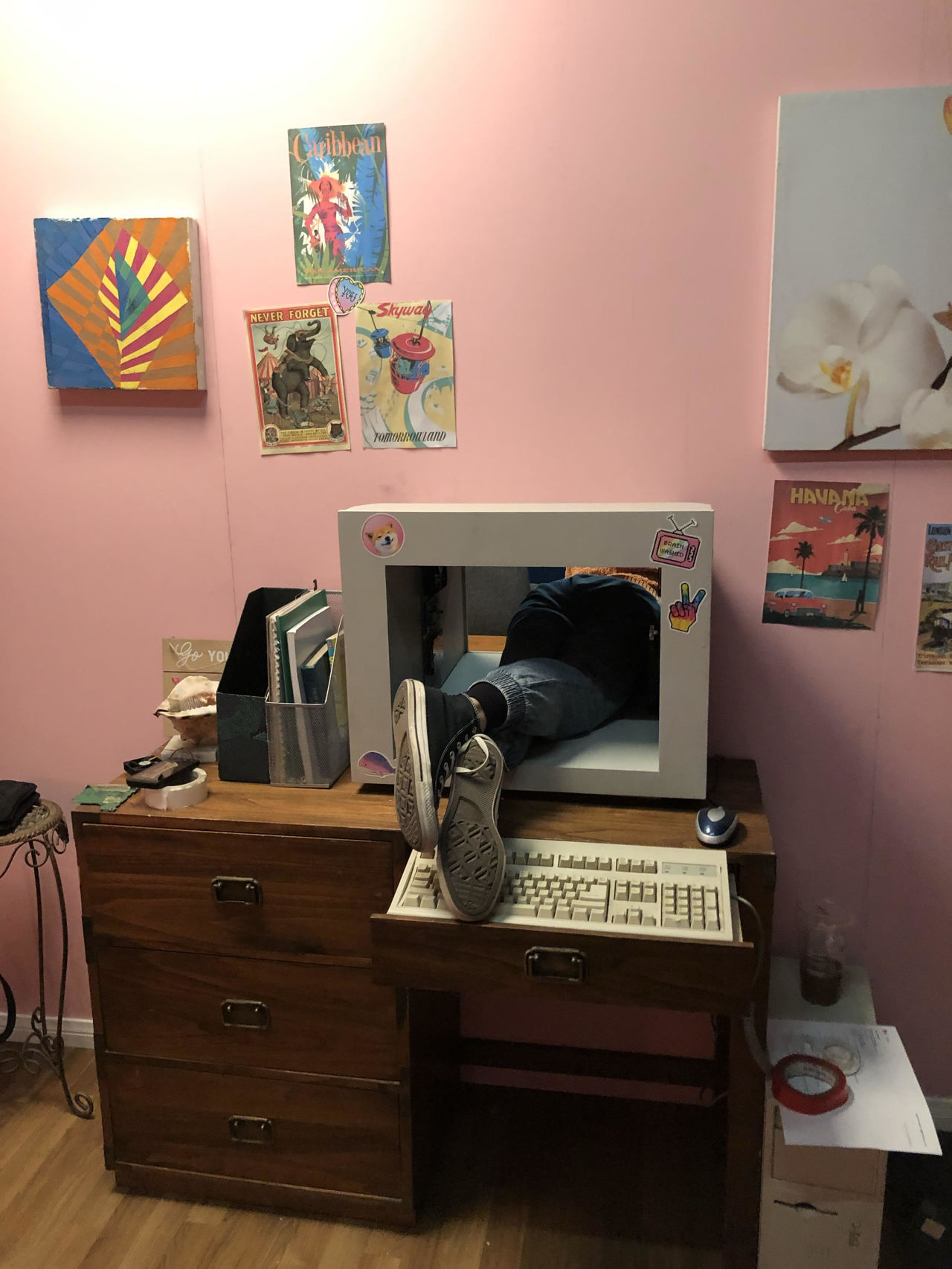
How was the shoot itself? We can imagine that it required a lot of different setups and steps.
It was a two-day shoot, with one build day beforehand. The first day was all the scenes in our studio sets - the bedrooms and the band performance - and the second was our exteriors.
In our studio day, we had to move very quickly to be able to get everything we needed. Since we didn’t have room for a pre-light on our build day, we’d set the lights on one set, and then while we shot out those scenes, electric would jump ahead to the next sets and get those ready.
For prep, I had made a text animatic edited against the music track, timing the actions and shots out exactly; this helped us really shoot for the edit, and not waste any setups that wouldn’t get used.
There were definitely a lot of setups to get through, but Trevor Wineman (DP) and I thoroughly dialed in our shotlist. For prep, I had made a text animatic edited against the music track, timing the actions and shots out exactly; this helped us really shoot for the edit, and not waste any setups that wouldn’t get used.
We had a good amount of needed set changes - swapping out household objects for gigantic versions, etc - but Matt Sokoler and his team did amazing work on a fast timeline, both in creating all the surreal sets in the first place, and then manoeuvring between dressing setups during the shoot.
Did you encounter any unforeseen issues along the way? How were they overcome?
Things always pop up, no matter how prepared you are.
One unforeseen issue was the wind! For the forced perspective shot where we see a close up of hands “holding” a smartphone, and then the hands lower and we realize it’s a 7 foot tall phone standing on the grass: We filled the “screen” with a tasseled doorway curtain, which we had matched to the one leading into our band performance space set. The forced perspective gag worked great…but right as we were about to shoot, the wind picked up, blowing the tassels everywhere. If a single strip of fabric blew outside the boundary of the phone’s “screen,” the illusion was broken, killing the gag. We tried tamping down the fabric, but it didn’t quite read right. So we had to just wait for lulls in the wind. Monroe Cline, the actress who was “holding” the phone, had to try to hold her hands frozen in midair for extended periods of time, ready for the moment when the breeze would die down enough, as we all waited with bated breath…
Mother Nature took pity on us, luckily.
What's your favourite moment in the vid? Why?
My favorite moment is where the gentlemen in the park holds up his phone, which shows the kids at the computer…and then they break the frame, peering out from around its edges. It was such a simple shot, but was so immediately satisfying—even without a camera.
Gondry was, of course, an influence, on this piece and on my work in general.
We used the hollowed-out frame of a phone for that forced perspective shot; and even when you just held that phone frame up before your eyes, framing it around the slice of the bedroom set, the illusion was really effective.
You could trick your own brain.
The in-camera effects bring to mind Michel Gondry's early work. Was that an influence? What other directors/pieces informed the film?
Gondry was, of course, an influence, on this piece and on my work in general. A few scenes from Being John Malkovich were good references as well.
For the shot where the boy looks through the empty hole of the computer, I was inspired by a little shot from a friend’s skate video, Finta by Dino Coce.
An interesting aspect of that: Finta itself was heavily inspired by a previous video that I myself had made, Spirit Quest. So it was cool that inspiration begat inspiration there! Ideas passed back and forth through work over time, evolving.

Weezer are a band renowned for excellent music videos. Was it intimidating taking this one on? How was the process of working alongside the band?
That’s actually why I was so excited to do the video…and also why, yes, I felt the pressure! Especially since we didn’t have a ton of resources on this one.
I’ve found myself in similar situations before, when I’ve been tasked to do videos for groups like Radiohead and Battles. Their previous work—as well as Weezer’s—have been big inspirations to me, so I had to try to live up to their iconic work, while still bringing my own take to it.
Hopefully I was somewhat successful.
[Weezer] were game to be silly on camera, which is somewhat rare for artists.
Rivers, Patrick, Scott, and Brian were great to work with. Big thanks to them for letting me portray them as phone-obsessed zombies.
They were game to be silly on camera, which is somewhat rare for artists.
What's up next for you?
Writing on some long-form projects, and trying to put together the next fun short form pieces!
That, and trying to stay healthy and sane, along with everyone else in the world.
)
